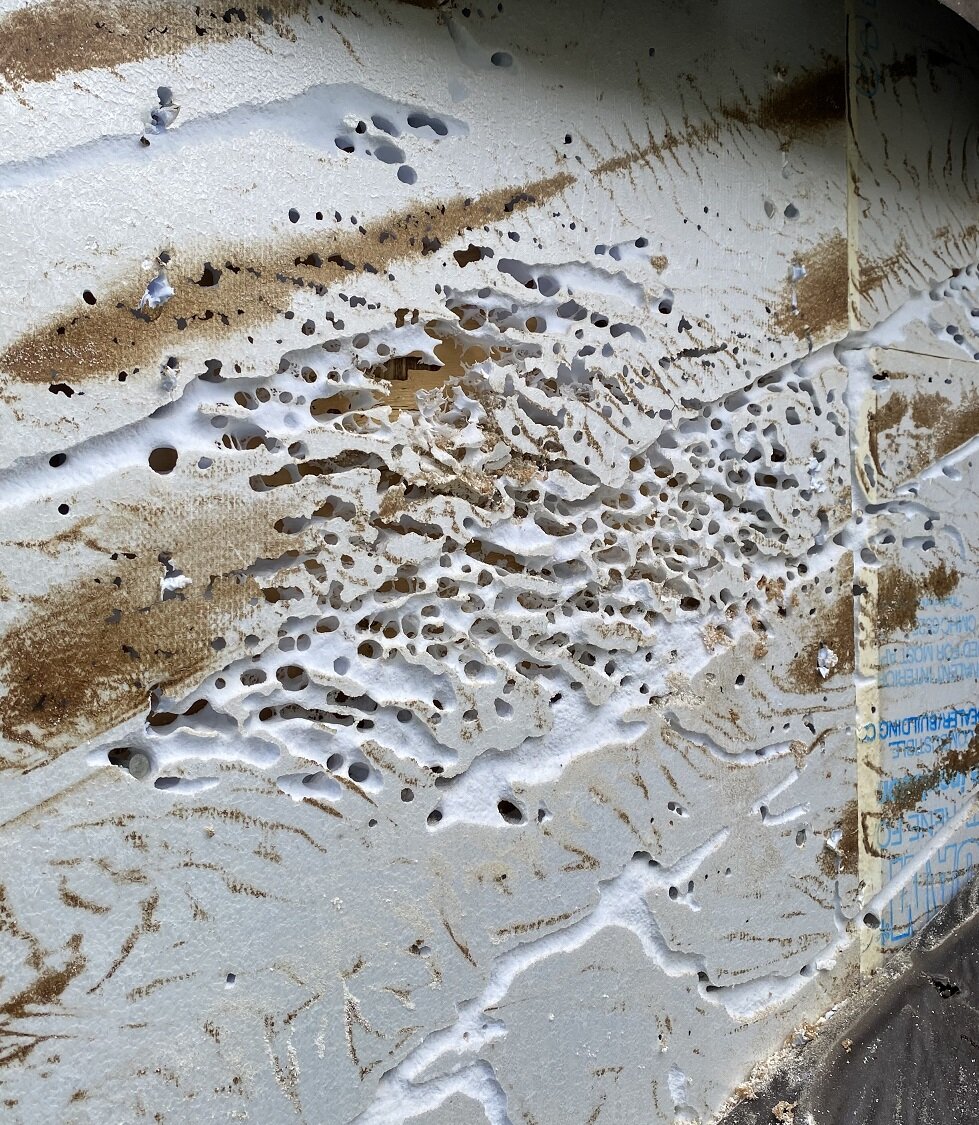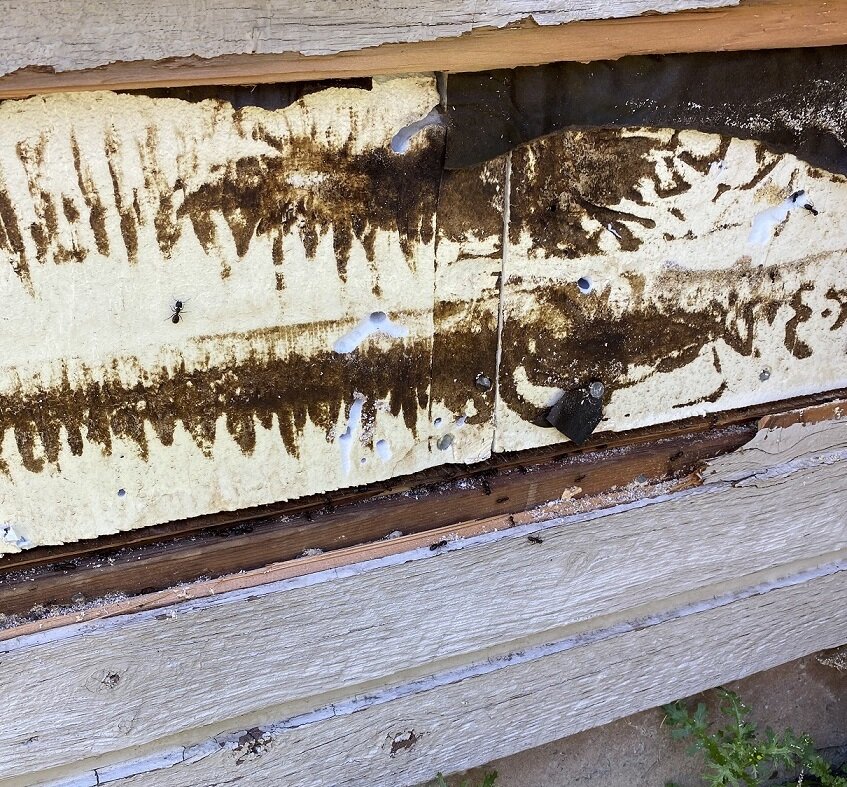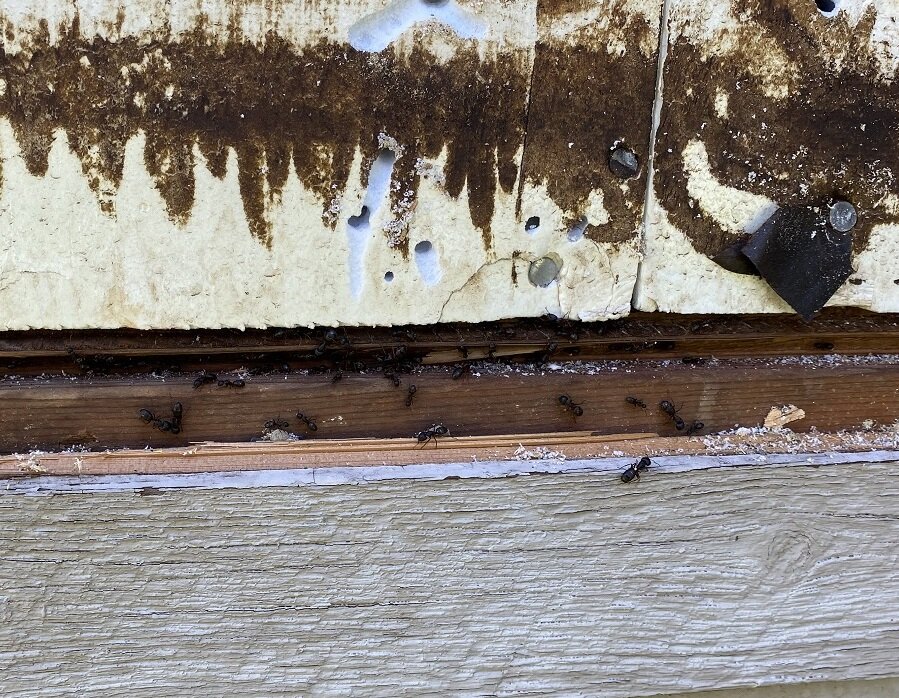We recently completed a siding replacement where we got a little bit more than we bargained for: a massive, decade old colony of carpenter ants had moved in! This article covers how we solved the issue for the customer, and what to do if you ever find a carpenter ant colony in or around your home.
The Story
When our customers had their windows replaced a few weeks before the siding project started, the window installers reported some ant activity around one of the ground floor windows. The customers let us know right away, and we made a plan to uncover that area early on in the project.
Once the crew had a good start on the front of the house, Bjorn removed a few pieces of old cedar siding where the window installers had noticed the ant activity. It didn’t take long to see that this was a serious nest.
bringing in the exterminator
Once we saw the scope if the infestation, we knew that we needed to bring in reinforcements. We called in a professional exterminator the next day, because we had to make sure to eliminate the nest before we continued on with new siding.
When the exterminators arrived, we got right to work. We would remove a few sections of siding as quickly as possible, and the exterminator would then spray the newly exposed area. When all the visible ants had been sprayed, we removed the styrofoam insulation that was installed on top of the plywood sheathing, and wait for another round of spray. Eventually, we started removing the plywood sheathing and fiberglass insulation, because the ants had been burrowing into there as well.

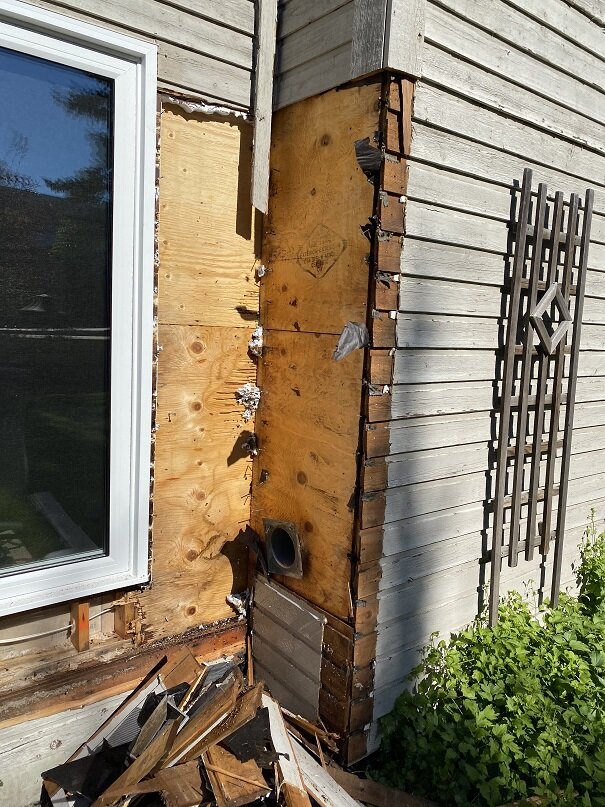
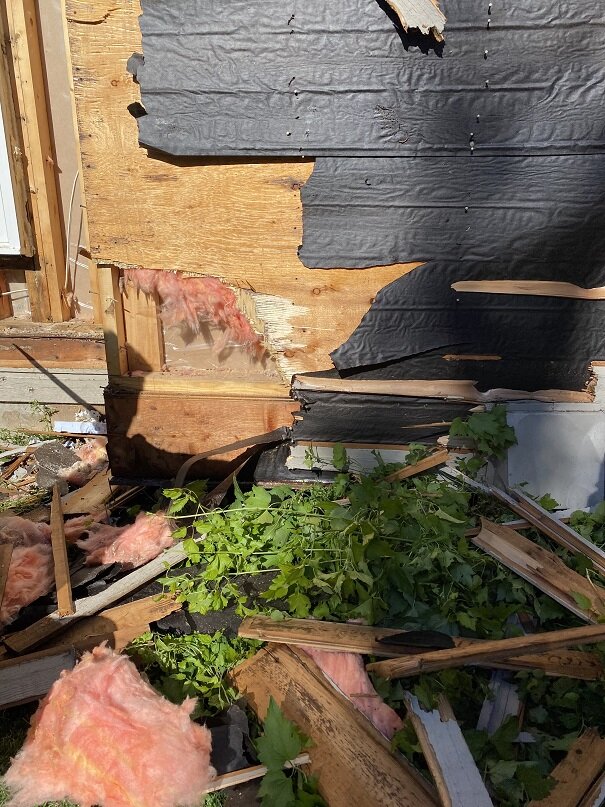
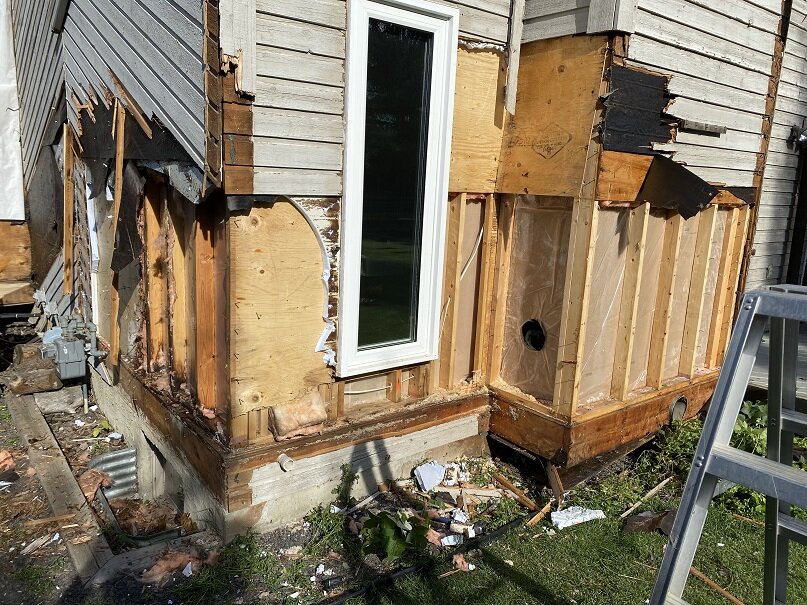
After two hours of this remove/spray cycle, we finally reached the end. There were no more ants to spray. Unfortunately for us, there was a small but powerful thunderstorm approaching! We rushed to install a temporary layer of Tyvek over the newly exposed area of the home to protect it from the approaching rain.
From there, we installed new batt insulation, new plywood sheathing, and new rigid styrofoam panels to put the wall back the way it was before the ants moved in. Then we were able to continue on with the siding portion of the project.
An Unusual Infestation
If looking at these pictures makes you think that something looks a little bit off with this ants nest, you’re right! These ants chewed up barely any wood to create their nest.
Unlike termites, carpenter ants don’t actually eat the wood that they chew up. Carpenter ants are only carving out more galleries for their nest. This means that if there’s an easier alternative to wood, the ants might just make their home in something else instead. In this case, the ants had absolutely no trouble carving out chunks of the styrofoam insulation panels for their galleries.
This was a stroke of good luck, because replacing insulation is much faster and cheaper than re-framing large sections of stud walls. The damage could have been much, much worse.
Carpenter ant questions & Answers
Since we have a bit of experience dealing with a carpenter ant infestation, we thought it might be a good idea to list a few of the things that we’ve learned:
How long does a carpenter ant colony last?
A carpenter ant nest can be active for 20 years or more! The exterminator that worked with us on this project estimated that this colony was at least 10 years old.
Where do carpenter ants come from?
Every year, mature ant colonies produce new queens; these new queens fly out from the nest with a few males in search of a likely spot for a new colony. They like spots with moist wood, because they know they can carve out a nice nest. If you have ants in your walls, there’s a good chance you have an active ant colony in your yard somewhere.
How can I prevent an ant infestation in my house?
The best way to prevent an infestation in your home is to remove any nests that you find in your yard as quickly as possible. Remove any rotting tree stumps and landscaping features. Don’t store firewood against the side of your house. All of these will reduce the chances of a colony starting up in your walls.
What do I do if I suspect an ant colony in my house?
The best thing to do is call an exterminator right away. Resist the urge to spray the area yourself with a DIY product, because the exterminator may need to use these ants to locate the main nest. Don’t open up the nest until the exterminator has arrived and is ready to spray.
How much does it cost for an exterminator to remove an ants nest?
Every exterminator and every nest is different, but this nest cost us $500 to remove.

